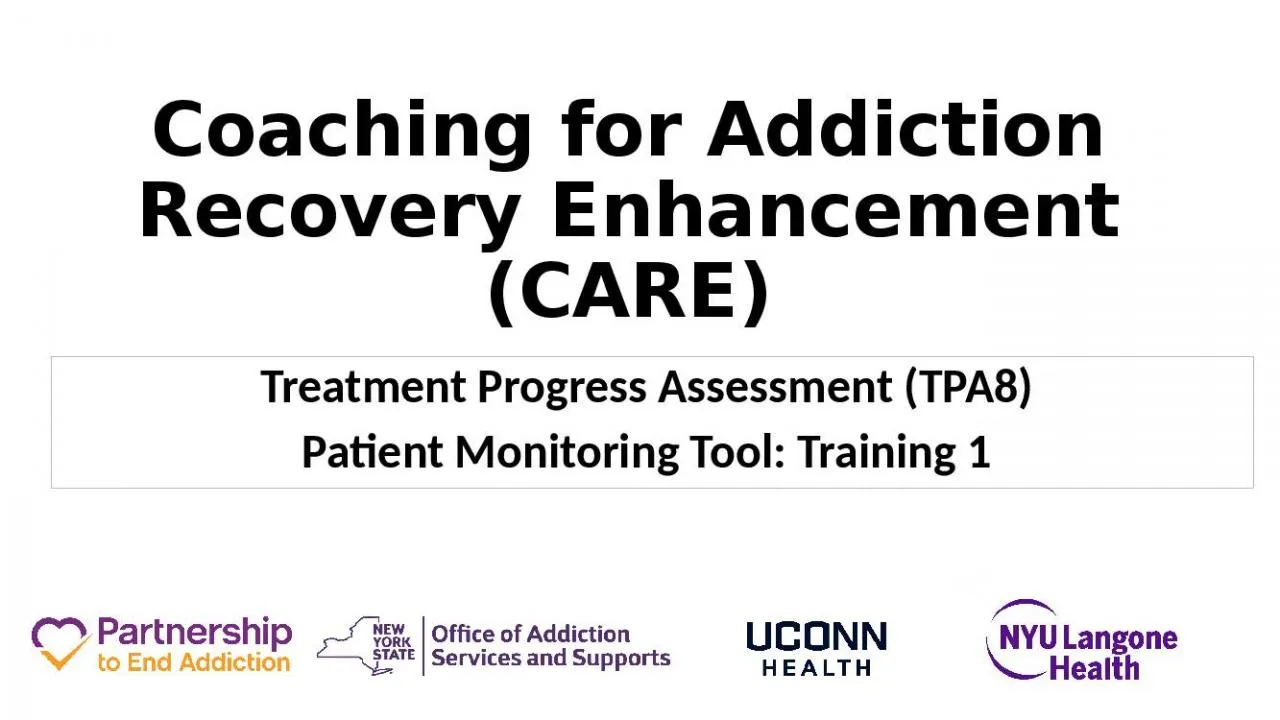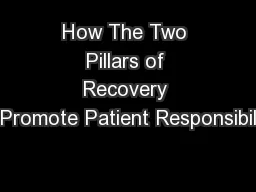PPT-Coaching for Addiction Recovery Enhancement (CARE)
Author : zoe | Published Date : 2022-02-16
Treatment Progress Assessment TPA8 Patient Monitoring Tool Training 1 What is the Treatment Progress Assessment TPA8 The Treatment Progress Assessment8 TPA8 monitors
Presentation Embed Code
Download Presentation
Download Presentation The PPT/PDF document "Coaching for Addiction Recovery Enhancem..." is the property of its rightful owner. Permission is granted to download and print the materials on this website for personal, non-commercial use only, and to display it on your personal computer provided you do not modify the materials and that you retain all copyright notices contained in the materials. By downloading content from our website, you accept the terms of this agreement.
Coaching for Addiction Recovery Enhancement (CARE): Transcript
Download Rules Of Document
"Coaching for Addiction Recovery Enhancement (CARE)"The content belongs to its owner. You may download and print it for personal use, without modification, and keep all copyright notices. By downloading, you agree to these terms.
Related Documents














